Metal Cosmos (#1) (download, 40mb)
Tags: Dark Fury, Drawn and Quartered, grandeur, kever, metal cosmos, morpheus descends, podcast, radio, radiocast, rotheads, sammath
Metal Cosmos (#1) (download, 40mb)
Tags: Dark Fury, Drawn and Quartered, grandeur, kever, metal cosmos, morpheus descends, podcast, radio, radiocast, rotheads, sammath
A limited amount of copies of Morpheus Descends‘ all-encompassing CD compilation, From Blackened Crypts, are back in stock at Dark Descent Records. This is only a small number of copies being found in storage, not a reprint. Morpheus Descends are also currently working on material for a comeback album.
2 CommentsTags: anthology, compact disc, compilation, dark descent, dark descent records, from blackened crypts, morpheus descends, news
It took some time, but despite the deluge of content constantly bombarding us and aspiring metal fans worldwide, we’ve been able to reach some level of consensus on 2015’s worthwhile metal music. Not to say that we’re in perfect harmony (If you’ve been paying attention, you’ll note that there’s some room for dissonance in our musical language), but the hope is, like what our recent reinspection of 2013 revealed, that some of this material remains interesting for more than the year it was released.
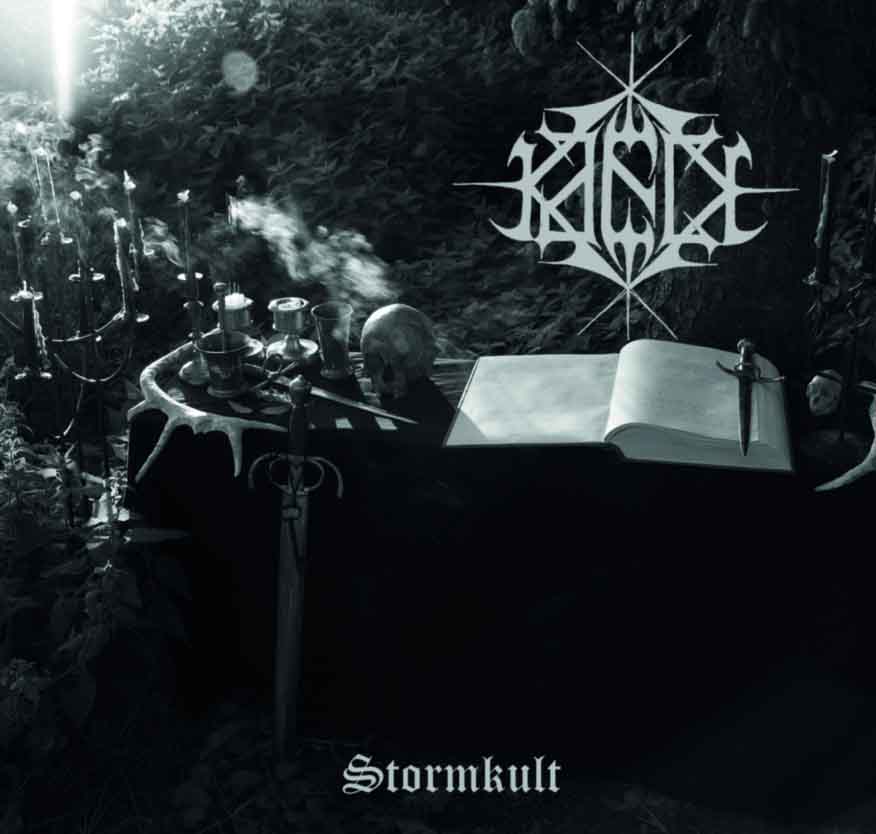
A wrathful reminder of what war metal should have been: a melodically-structured, chromatic holocaust to the god of this world. Jan Kruitwagen’s leads awe listeners and are optimally placed to hold attention just as each rhythm riff runs its course. An impenetrable mix rewards repeated listening to an album that may surpass Kruitwagen’s work on Sammath’s Godless Arrogance. March to Kaeck’s martial heartbeat or revel in shit.
Reviews:
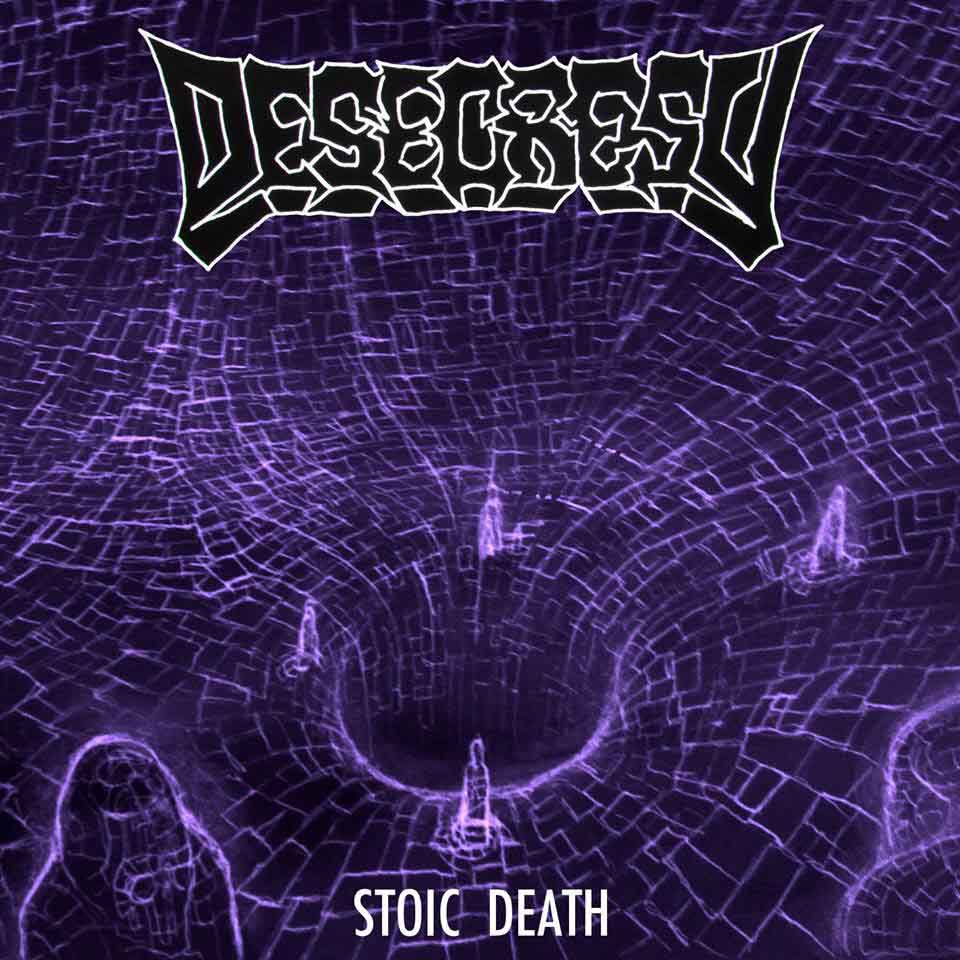
Bolt Thrower meets ritualistic black metal. Rather than cathartic bending into climactic oriental leads, Desecresy diffuse tension by methodically varying into bizarre melodies with carefully placed, otherworldly leads to a steady metronome.
Mid-paced riffing in the style of Bolt Thrower builds tension with melody and drifts off into space with variations and well placed leads. Where Bolt Thrower themselves shoot a rifle at the ballon using rhythmic change to introduce another riff or dramatically bending the riff into a climactic, oriental short solo, Desecresy insert ritualistic blackened leads for dramatic contrast with the rhythmic, power chord riffing.
Review and Interview:

Rob Miller returns from blacksmithing to his previous metallic occupation with an album of catchy post-punk in Motorhead and Metallica song formats. Thankfully free of the Godsmack and other MTV influences present on Amebix’s swansong.
Review:
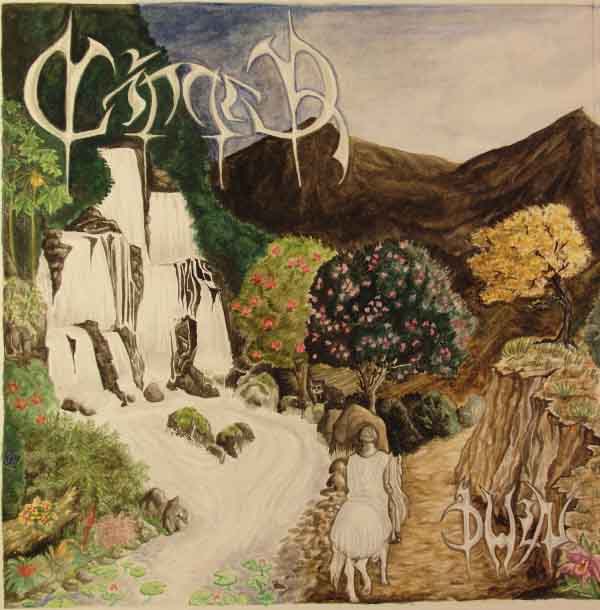
An effective album of mid-paced death and heavy metal riffing. There is no psychedelic rock pretending to be Black Sabbath “doom” here. Highly structured; the opposite of the random tossed riff salads of most modern metal. This band takes an approach more like that of classical guitarists toward melding death metal with progressive rock, blues, folk and other influences: it mixes them in serially and adopts them within the style, rather than hybridizing the two styles.
In other words, most bands that try to sound like progressive death metal try to act like a progressive rock band playing death metal, or a death metal band playing progressive rock. Cóndor takes an approach more like that of musicians in the past, which is to adopt other voices within its style, so that it creates essentially the same material but works in passages that show the influence of other thought.
Reviews and Interview:
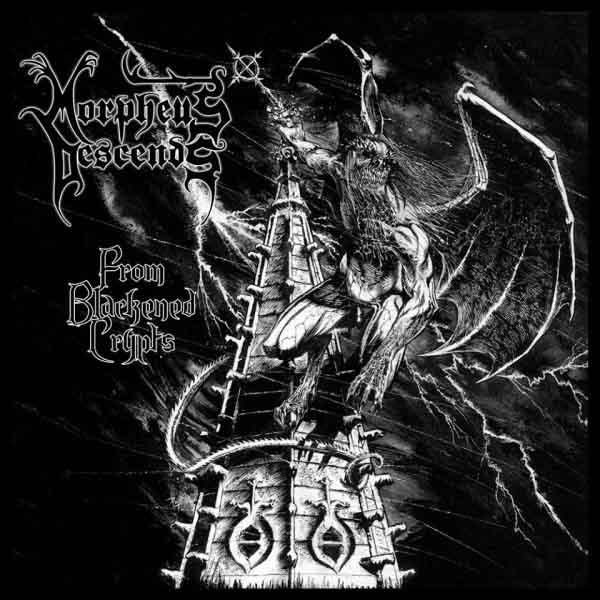
This vinyl 7” single features two new, well constructed death metal songs from one of from one of the few truly underrated bands in the genre. Those foresighted enough to purchase the identically-titled CD boxed set version received the band’s entire catalog in one of the rare remasters that sounds better than the original releases.
Interviews:
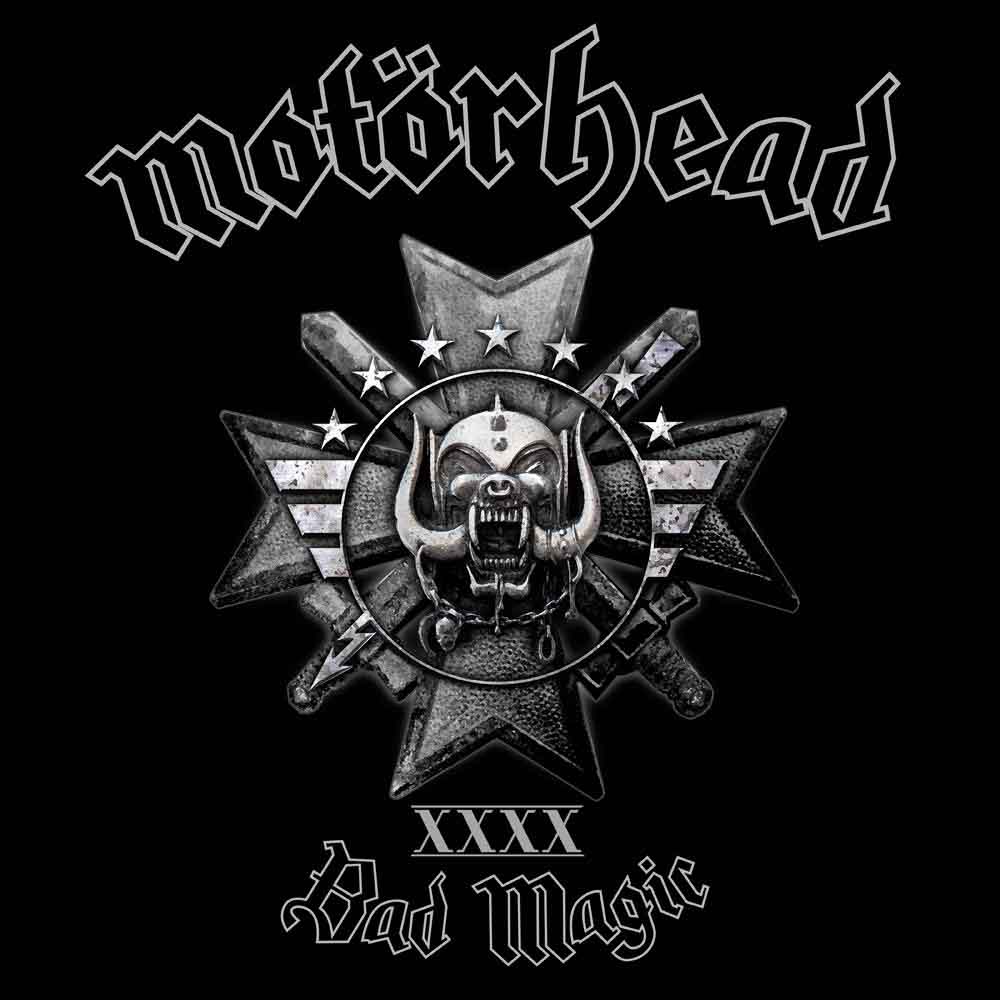
One last Motorhead album of mostly Motorhead songs. Nothing “new” is introduced for those in the non-metal audience who disdain metal and wish to feel intellectually superior to the common headbanger. The final work from a relentless machine of a band.
Review:
Crusty death metal of the better than braindead Benediction but worse than Cancer category.
I’ve possibly heard too much but Hanger 18. I know too much. Although not as degradingly vulgar as Surgical Steel, Atom by Atom results in a pretty tacky affair. Vocals are as emotional as in the first album, except that in here they seem even more disconnected from the music as the music veers into some sort of progressive speed metal akin to Helstar’s. (Editor’s note: I liked it, but David Rosales was critical)
The band shows promise with their Unique Leader-style rhythmic riffing and soaring heavy metal leads. While being above par for technical deaf metal, aping a different one of your heroes every few verses doesn’t make for particularly enjoyable repeated listening.
Fredrik Nordstrom’s Arghoslent.
Technical power metal carnival music.
Nobody is allowed to edit themselves or turn on their bullshit filters in Steve Harris’s band anymore (Read a full review here).
Kvist meets the randomness of metalcore. Indistinct riffing and songwriting mix with pointless shoutout verses to past greats that makes listeners wonder why they aren’t just playing Sodom and Mayhem in the first place.
Where are the riffs?
Every Teutonic speed metal band gone Voltron.
The band has no need to repeat half the song just so the guitarist can get over his refractory period and play another solo. This is also an extremely distracted riff salad in which the individual riffs can be brought in from sources as different as galloping power metal to thrashy death metal to alternative nu and groove “metal”. This is headbang-core for beer metallers and other social metalheads. This recording received two reviews in 2015.
A collection of interesting renaissance faire riffs written into songs that quickly wear out their welcome as metal, becoming RPG background music.
A few strong songs on a demo do not warrant a two CD set of Swedish death with limpid keyboards anticipating the steps black metal took towards mainstream goth rock in the late nineties.
This is the type of black metal as repetitive rock music that ignorant hipsters will praise as “ritualistic”. The album’s title sums the quality of its musical content: futile. (Editor’s note: I wanted to give this album a chance. It didn’t age well.)
Gothenburg cheese and Meshuggah licks are less appetizing than a lead-laced Mexican lollipop.
Grave Miasma returns. This time with 1993’s atmosphere.
Candlemass meets Soundgarden.
Every Teutonic speed metal band gone Voltron.
Solid underground metal in the spirit of Sarcofago that is perfectly well-written but does not amount to more than the sum of its parts; does not conjure up any long-lasting message.
Tags: 2015, best of, best of 2015, Black Metal, condor, death metal, desecresy, Heavy Metal, kaeck, mainstream metal, morpheus descends, motorhead, reissues, Speed Metal, Stormkult, tau cross, underground metal
Playing a cavernous underground music, Undergang have crystallized a style in Døden Læger Alle Sår that harks back to the sound not only of obvious Scandinavian forefathers but also to that of Morpheus Descends and Demoncy. Rather than spiraling through serpentine corridors as Incantation does, Undergang uses vocabulary from the Swedeath lingo here, and then the atmospheric death metal riff of Morpheus Descends there, only to descend into a the more inconspicuous atmospheric tremoloing of Demoncy to further the expression. Enriching this mixture of influences, we can also find unexpected doom-like moments with the economical and spacious approach of Worship.
Even though all these are present in Døden Læger Alle Sår, the style parade that a collection of influences often results in is not present here. It is also very important to stress that Undergang does not fall into trope repetition nor does it wink at the listener with a cliche here and a cliche there. The band expertly appropriates the different stylistic conventions under a overall Swedish death metal mantle and, more impressively, escapes the cliches of the latter as well. The reason why it can work is because the grindy Nihilist, the American Morpheus Descends and the decorative ends in Demoncy and Worship – like breaths are all compatible. It is only unfortunate that while all this has been accomplished, Undergang’s own voice still seems only visible as a blurry image behind this coherent, translucid tapestry.
4 CommentsTags: 2015, death metal, demoncy, Døden Læger Alle Sår, morpheus descends, Nihilist, Scandinavia, Swedeath, undergang
During the 1980s, a group of wives of senators and other busybodies got together to form a group they called the “Parents Music Resource Center,” or PMRC. Their intention was to protect children from the dangerous heavy metal, rock and rap music which had sexual, drug and occult themes. After essentially shaming the interesting bands, the group finally used the coercive power of shame to force labels and record stores to insist on warning labels for albums with content that might upset the precious snowflakes and their absentee parents.
Unlike acid-washed jeans and Valley Girl slang, the PMRC unfortunately did not die with the 1980s. It lives on in zombie form through the Parents Music Resource Center appreciation group, which has taken to flagging certain metal bands, zines and labels as hostile to decency, morality and good taste as all metal should be.
Morpheus Descends proved to be the most recent instance of quality metal running afoul of these deranged censors, who feel that the new material from this band will cause “casual sex, drug use, enema fetishism and voting Republican” (PMRC boss Tipper Gore was wife to Al Gore, at the time Democrat senator from New Hampshire). We’re not really sure that people — at least still living people — want to have sex to old school death metal, but as the internet’s “rule 34” implies, any imaginable fetish has already occurred.
This clash between good and evil occurred at the moment when Morpheus Descends released one of the two newly written and recorded tracks to be on their From Blackened Crypts compilation. Check it out below.
7 CommentsTags: censorship, dark descent records, death metal, morpheus descends, Old School Death Metal, pmrc, sodomy
Dark Descent Records has announced plans to unleash a compilation of US death metal bands which will accompany an upcoming issue of Legacy magazine from Germany which will be themed around death metal.
Bands confirmed so far:
Morpheus Descends
Thevetat
Blood Incantation
Spectral Voice
House of Atreus
Grave Ritual
Imprecation
Blaspherian
Horrendous
Father Befouled
Dark Descent Records label head Matt Calvert adds: “We’re still working on a couple others as well. These will be rare/unreleased tracks on this CD compilation and may include 7” tracks, vinyl or cassette only tracks or some early teasers (in the case of Grave Ritual). More soon.”
In the meantime, interested listeners can look to the last Dark Descent Records compilation which unleashes free digital music in the underground metal styles.
2 CommentsTags: blaspherian, blood incantation, dark descent records, death metal, Father Befouled, Grave Ritual, Horrendous, house of atreus, imprecation, matt calvert, morpheus descends, Spectral Voice, thevetat
Early death metal band Morpheus Descends is back in the action, with future tours lined up and a re-issue of its complete recordings heading to stores. The compilation From Blackened Crypts combines the full-length Ritual of Infinity with the two EPs that followed, Chronicles of the Shadowed Ones and The Horror of the Truth along with other rare recordings.
The box set includes, in addition to the 2CD digipak, two new and unreleased tracks wich will see issue as a separate 7″ entitled From Blackened Crypts and a DVD entitled Visage of Malady which contains tons of live footage as well as interviews with the band, accompanying a 11×17″ double-sided poster and 24-page booklet. The tracklist is:
Disc 1
1. Oozing from the Urn
2. The King’s Curse
3. The Way of All Flesh
4. Corpse Under Glass
5. Immortal Coil
6. Trephanation
7. Proclaimed Creator
8. Accelerated Decrepitude
9. Submerged in Adipocere
10. Enthralled to Serve
11. Ritual of Infinity
12. Trephanation
13. Accelerated Decrepitude
14. Triformed Limbs
15. Stigmatic Crucifixion
16. Residual Kill
17. Cairn of Dumitru demo 93
Disc 2
1. The Cruciform Hills
2. Cairn of Dumitru
3. Autumn Bleed
4. Signs of Gehenna
5. Moupho Alde Ferenc Yaborov
6. Begging for Possession
7. Valley of Undead War
8. Shaitan the Unborn
9. The Horror of the Truth
10. Corpse Under Glass (Live Reunion-Martrydoom)
11. Accelerated
12. Trephanation
13. Triformed Limbs
14. Accelerated
15. The Cruciform Hills pre-release ’94
16. Residual ’91
17. Autumn Bleeds ’93
Tags: dark descent, death metal, morpheus, morpheus descends
Dark Descent Records announced the pre-order of a CD/DVD box set of classic underground death metal band Morpheus Descends (formerly Morpheus) featuring two CDs and a DVD including all past material from this formative act which influenced Suffocation, Cannibal Corpse and many other death metal bands from the early 1990s.
The box set will include, in addition to the 2CD digipak, two new and unreleased tracks wich will see issue as a separate 7″ entitled From Blackened Crypts and a DVD entitled Visage of Malady, as well as a 11×17″ double-sided poster and 24-page booklet. The tracklist is:
Disc 1
1. Oozing from the Urn
2. The King’s Curse
3. The Way of All Flesh
4. Corpse Under Glass
5. Immortal Coil
6. Trephanation
7. Proclaimed Creator
8. Accelerated Decrepitude
9. Submerged in Adipocere
10. Enthralled to Serve
11. Ritual of Infinity
12. Trephanation
13. Accelerated Decrepitude
14. Triformed Limbs
15. Stigmatic Crucifixion
16. Residual Kill
17. Cairn of Dumitru demo 93
Disc 2
1. The Cruciform Hills
2. Cairn of Dumitru
3. Autumn Bleed
4. Signs of Gehenna
5. Moupho Alde Ferenc Yaborov
6. Begging for Possession
7. Valley of Undead War
8. Shaitan the Unborn
9. The Horror of the Truth
10. Corpse Under Glass (Live Reunion-Martrydoom)
11. Accelerated
12. Trephanation
13. Triformed Limbs
14. Accelerated
15. The Cruciform Hills pre-release ’94
16. Residual ’91
17. Autumn Bleeds ’93
For more information, see the pre-order page at Dark Descent Records.
12 CommentsTags: dark descent records, death metal, morpheus, morpheus descends
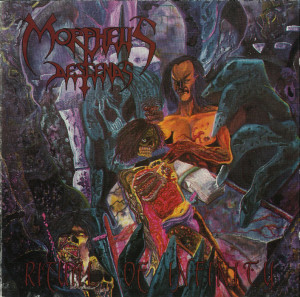 Most of us who emerged into the classic death metal milieu are familiar with Morpheus Descends‘s classic album Ritual of Infinity and its striking cover art that remains controversial to this day. The illustrator who created that polarizing work has launched an online presence and is designing metal art of similar caliber.
Most of us who emerged into the classic death metal milieu are familiar with Morpheus Descends‘s classic album Ritual of Infinity and its striking cover art that remains controversial to this day. The illustrator who created that polarizing work has launched an online presence and is designing metal art of similar caliber.
Morpheus Descends rose after the early years of American death metal but before the solidification of the style, and created a grandfather template for both New York death metal and heavy percussive death metal in general. Their most notable influences were on bands like Suffocation and Incantation, who took the blueprint that Morpheus Descends created and pushed it to new heights of complexity and technicality.
Brad Moore, who designed the iconic cover, was able to give us a few moments of his time to describe his art, life and time with Morpheus Descends. For those curious about the band, our interview with Morpheus Descends is a good place to start, or peruse our brief explanation of the band and its context.
How did you get started in art?
Like many who decide to become full-time artists, I began in grade school as the guy who could draw really well. I specialized in dinosaurs, hot rods and sci-fi. My classmates always got me to draw for them. It was my Junior High art teacher who first made me aware, that since I spent all day drawing anyway, why not make it my career and be paid for it? My brain did a back flip, as I did not know such a thing was possible, having been brought up in a very small country town. I credit my High School art teacher, Barbara Allen, who is now a top portrait painter, and two professors in college, Herbert Fink, and Ed Rollman Shay. They REALLY showed me the path! Eternal gratitude flows forth.
How did you get started in metal? Were you a metalhead? Did you “study” any heavy metal art?
Although my career began as a horror style comic book artist (I worked for comics publishers like Fathom Press, Boneyard Press, Graphomania, London Night Studios, etc) I was always a metalhead! When bands would tour, they often bought and read comics on the road. It wasn’t long at all before I got mail, asking me to draw or paint t-shirt designs, logos, cassette, and CD covers. Soon after, ‘zines came, asking for gory covers, inside illustrations, and dark comic strips. I was doing 3-5 fliers a week back then for metal shows. I didn’t really study any “metal” artists, as I have broad tastes, and enjoy a ton of different stuff. I’ve been to Richard Corben’s house, and viewed the original painting he did for Meat Loaf’s Bat out of Hell. I did an art exhibit with H.R. Giger in Switzerland and saw his sketches for what became covers for Celtic Frost and Emerson, Lake, and Palmer. But I’ve always had my own approach; no one has ever said that my art resembles the work of anybody else.
What other influences exist on your art, like other artists, morbid dreams, etc?
Dreams, DEFINITELY!!! I’m also very into the films of European directors, and the famed Polish Poster movement. I’m an ardent Surrealist.
How did you end up doing the Morpheus Descends cover? Are you a Morpheus Descends fan?
I was, and still am, a major Morpheus Descends fan! When I first got and heard their cassette “Corpse Under Glass,” I was hooked, feeling that they were the heaviest I had ever heard at that time. The band, as luck would bequeath, turned out to be horror comics readers who knew of my work. Ken, their bassist, wrote me, and we discussed the possibilities for the art that became the cover of Ritual of Infinity. In the original sketch, the “wizard” character had his hands raised, and an infinity symbol carved into his bleeding chest. I think his eyes might have been bleeding, as well, and in one hand, he held a bloody, ancient scroll. After another phone discussion, the “Carven-Diety” had its hand positions changed, and the “wizard” was now in the pose we all have grown used to: that of sawing the head off an androgynous cadaver. An ad for Ritual of Infinity featuring the debut of the cover art in b/w was published as the back cover of gore/horror comic book Cadaver, issue # 1, by Fathom Press, in ’92’-93. Funny thing: the record company’s name (J.L. America) is misspelled.
The Morpheus Descends Ritual of Infinity cover art uses some rather unorthodox (for metal) color combinations. What inspired your choices here?
Yes, the issue of the cover has stirred as much hate, as it has admiration, and I think that’s the best thing you can hope for. The colors I chose WERE very strikingly different for what was happening with other illustrators at that time. (Or, for any time, really.) The painting was a combination of oil paint and Rotring dyes, and it strode counter to the monochromatic approach that most others were doing. When I look even now at a box full of CDs at a merch table, I am struck by how many generic looking, grey and black compositions I see. Most are great looking on their own, but a table full of them are monotonous, and do disservice to the music and bands. I knew Morpheus Descends weren’t going to be on MTV, any time soon, so their CD cover, love it or loathe it, had to nail you across the room.
You’ve just gone online. Are you offering other services to metal musicians? What other directions do you hope to take your art in?
I just finished designing the T-shirts and poster for the Stoner Hands of Doom fest, as well as the T-shirt for Argus’ upcoming European tour (I did all three of their album covers); I’m working on two new CD covers, for two new bands, The Swill, and Foghound; I will have art featured in the winter issue of Churn magazine (Issue # 11); I am designing and building the special effects props for an upcoming film named “Platypossum”; and I am masterminding a civic project that I have dubbed “Mobile Murals.” Watch for the cover I did for Ed (ex-Monster Magnet) Mundell’s next solo LP; it’s one of the greatest I’ve ever done. Check out my page at bradmooreartwizard.com, or hit me up on Facebook @ Brad Moore’s Illustration Station.
1 CommentTags: cover art, death metal, death metal cover art, metal art, morpheus descends
Back in the early days of death metal, it was fun to spin some contrast on the radio. Start out with the phrasal bands like Morbid Angel and Slayer, work up to something percussion like Deicide or Suffocation, then drop into the doom-death. Somewhere in there, Obituary, Asphyx, Incantation, and Morpheus Descends all got displayed.
The latter was a puzzler since it was grim, primitive and primal, yet thoughtful and very distant from the normal everyday lives most people aspired to. It was truly music to keep the listener outside the arc of society’s concerns, guilt and manipulations, and for many of us it was deliverance. It blended into the other death metal as if it belonged there, a distinct voice that yet upheld a shared spirit.
Morpheus Descends was thus for many of us a go-to band when we wanted the old school underground sound. Music from beyond this world, it chanted dark praises of outsider viewpoints on reality while crushing our heads with intensely grinding, explosive riffs. It is with great pleasure that after many years, I am finally able to interview Rob Yench/Xul of this massive underground cult…
Morpheus Descends appeared early in the death metal movement. What were you influences, and how did you conceive of the then-new musical style you were creating?
Before forming Morpheus, we were all in local area bands, Ken and I did a Voivod / DBC styled band called “Volitle Zylog”, Sam, Steve and Craig were all in a band called “Infectious Waste.” During the summer of 1990 we played an outdoor show together with a few other area bands. At the show we were talking to each other about the bands we were all interested in, as it turned out our tastes were very similar. When Ken and I heard “Infectious Waste” do a Pestilence cover we talked with the three of them right after the show and we decided to start a death metal band. A month later the five of us had all quit the bands we were in and formed “Morpheus.” Our first practice was on October 31st, 1990. Our style was based on what we listened to at the time, late 80s & early 90s bands like Death, Morbid Angel, Pestilence, Obituary, Napalm Death and our earlier influences like Black Sabbath, Voivod, Kreator and Celtic Frost. Once we became a band and played shows we started to meet other bands who shared the same goals, also playing many shows with our peers shaped the style known as New York Death Metal.
Were you among the creators of this genre? What do you think your contributions were?
All the previous mentions plus so many more helped create the genre but I will limit my scope to the bands that grew out of the scene that we were part of; Suffocation, Immolation, Mortician, Incantation, Ripping Corpse, Prime Evil, Human Remains, Nokturnel, Gorephobia, Deceased and Apparition (Sorrow). I don’t really measure what our contributions were to the genre except to say that I think the best reflection of what we have done as a band in Death Metal scene is all the people who still come up to us or still contact us online to tell us how much the band’s music means to them. We played a lot of shows in many states and even Mexico from 1990 – 1997, so I think we reached a lot of people in a time when Death Metal was “electric”.
I noticed that Suffocation seemed to have quite a bit of influence from Morpheus (Descends), with Terrance Hobbs wearing a Morpheus t-shirt on Effigy of the Forgotten and using one riff that seems similar to one of the riffs on Ritual of Infinity. Do you think you influenced Suffocation? Who else do you think you influenced?
Both bands were very good friends in the early 90s; we played our first show with them in Buffalo NY. After that it seemed like every weekend for a while, they either drove to our hometown to hangout or we drove to Long Island to hang with them. We would share ideas and jam with each other and show one another riffs and songs we had been working on. I think we are about as much an influence to Suffocation and much as Suffocation was and influence to us. The same things could be said for a lot of the other death metal bands from NY around that time too.
They’re talking about a “big five” of death metal bands doing a tour. Why do you think Morpheus Descends isn’t out there? What makes a death metal band popular more than others?
First and foremost I think the more popular DM bands of our era were signed to bigger labels (EARACHE, ROADRUNNER, NUCLEAR BLAST, METAL BLADE). We worked with a much smaller, less successful record label (JL AMERICA). With more promotion, bigger distribution and record company help; they also landed US and European tours. We did do some touring but not to the extent that a lot of those bands got to do. So they were much more accessible to fans in a time before the internet was so popular. We did EVERYTHING ourselves, touring, merchandise and even pressing. Outside of JL releasing the CD it was all 100% DYI.
Can you tell us the story behind your name change from Morpheus to Morpheus Descends? What happened to the other Morpheus?
JL had RED for distribution; they got a call that from RED that they wouldn’t be able to distribute the Morpheus CD because they already had a band of that name in their catalog. This band was some “gay” techno band, we did try to fight it but JL basically told us change the name or it will not be released. We had always planned to write a song called “Morpheus Descends”, so after some discussions we made the name change and never looked back.
You signed with JL America for your first album, which ended up being a rough path. What happened there? How would you do it differently if you had to “do it over”?
Well since NO other labels had any serious interest in us, it was a good choice. We got our music out to a lot of people that we would have never reached doing it ourselves. It may not have been exactly the record deal we were looking for but at least people saw the CD at stores and bought it. This is part of the reason for our notoriety today; you could buy the CD in most big record store chains at the time. Also it was distributed overseas as well. As far as doing it differently, it would have taken a better record label to have stepped and worked with us, which didn’t happen so there is no regrets when it comes to our history.
One of the things that stuck with me from Ritual of Infinity was the formal language you used for the titles. “Proclaimed Creator,” “Enthralled to Serve,” and “Ritual of Infinity” set a standard which other bands especially in New York aspired to. Where did you get the idea to write song titles this way?
Many of the songs you mention, we came up with the song title first; then we would talk about the concept of the lyrics; then Sam would write the lyrics around those ideas. I think that is why the titles sound so “formal”, we wanted the names of the songs to provoke interest in wanting to hear the songs. We stayed away from the simple titles of blood and gore and concentrated on making the titles and lyrics more interesting to the listener.
Is “Accelerated Decrepitude” a reference to Blade Runner? Were there other non-musical works that influenced you greatly? What about non-metal bands?
No, Blade Runner was not really an influence for this song. Progeria, the rare genetic condition that produces rapid aging in children was really the thought when we wrote the song as well as the artwork we used for the demo of the same name. Our take on it was that at birth the infant was already a century old, ancient and decrepit. I do not really think any non-metal bands are an influence to us, but we did listen to a lot of Wesley Willis when we traveled.
After Ritual of Infinity, Morpheus Descends came out with two very powerful EPs, Chronicles of the Shadowed Ones and The Horror of the Truth. Each of those had its own character. How do you see the band as changing during that time?
Yes, each MCD has a distinct sound and each time it was a reflection of the lineup at the moment and direction we would move in. We wanted to distance ourselves from a lot of the saturation of death metal bands of the mid 90’s, many were all using the same template as successful bands but really lacking their own identities. Chronicles of the Shadowed Ones was the first time we had time in the studio and did not have to rush ourselves; we developed a lot of ideas and had a real good time creating the music. It was also a transition time in the band; Sam and I became the main song writers and that is why you hear such a difference in the music. This music became much darker and doom laden than our previous endeavors.
When it came time to record Horror of the Truth more changes occurred; we had parted ways with Jeff our vocalist as well as our second guitar player Brian. Tom Stevens had recently joined the band as the replacement to Brian Johnson and then filled the vocal spot as well. So now the band had a different configuration and we went to Cleveland to record with our longtime friend Brian Seklua. The songs on that MCD were much faster and contain furious guitar solos; this was in contrast to the style of Chronicles of the Shadowed Ones. This would be the last recording we would do together as a band and I think the release didn’t get the exposure that it deserved. This was all shortly before the band disbanded, I would have liked to have seen where we could have gone with that lineup and sound.
Do you have any current plans for resurrection, touring, recording, etc? I see you’re set up for Martyrdoom Fest. Who’s in the lineup, and what expectations/hopes do you have?
We are taking things slow, things feel real good in rehearsals and it is sounding like Morpheus Descends should sound. This is very important to us to deliver what the band should sound like and to do justice to the legacy the band has become to Death Metal fans around the world. The lineup is the 4 of the original members from the MORPEHUS 1990 inception lineup. Sam Inzera, Rob Yench, Craig Campbell and Ken Faggio, Steve Hanson was not able to be a part of the reunion. Steve lives in Florida and when we started talking about making this happen we called him to see if he would like to be a part of this “return.” As much as he would have liked to do this, the distance is the real hurdle to work around; Steve did give this his “unholy blessing” and wished us the best!
After Martyrdoom, we are planning to work on some new songs for possible 2014 EP release. We have already exchange riff ideas and it sounds very Morpheus Descends!! Also there is a possibility in 2014 for more shows too but nothing confirmed as of yet.
What do you think of the state of death metal now? Is it fair to divide death metal into “old school death metal” and “modern death metal,” which is the term people use for the new style which has hardcore breakdowns, prog-math-metal riffs, and lots of sweeps?
There is a distinct difference between the two types of Death Metal you speak of; I myself am not really a fan of the “modern” death metal sound. I prefer what I grew up with and what feels comfortable to me. This is not meant to be a “dis” on this style but it is just not for me.
In your view, what are the bands who really shaped death metal into what it was, and what does death metal stand for? Does it have something to communicate, or is it just slightly weird music?
Cannibal Corpse, Morbid Angel, Death, Entombed, Carcass and Obituary would be some of the best known pioneers of the genre. As far as any deep meaning the music, I think each person has their own interpretation of what this means to each of them. For me it has been a way of life, family, work and Metal !!
Do you have any plans to re-release your older material?
There are plans in the works for some really cool stuff, but I will bite my tongue for now until things are more solid than at the moment. We want everything we do to be of quality and something that would be fitting in any MD fans collection!!
Members of Morpheus Descends have gone on to form a number of projects, including Mausoleum. How do these differ from Morpheus Descends, and do they reflect things you learned from the Morpheus Descends experience?
I play in four bands; Morpheus Descends, Mausoleum, Engorge and Typhus, Sam has Morpheus Descends, Mortician and Funerus. Ken does Morpheus Descends, Rooms of Ruin and Cabal 34. We have also done session work and played in a few other bands too but you see we are very immersed in Metal!! The bands we do are all different than Morpheus Descends, but what has been learned by me is to work with people and let each person express themselves and have input in all aspects of the process. Morpheus Descends was the “boot camp” for knowing how things work and what doesn’t.
How were the songs on Ritual of Infinity composed? They’re like mazes of riffs. Did you start with a riff, or an idea, or a story, or an image? How did you compose these mind-twisting tunes?
This was a time in the band when everyone was throwing riffs out there, we just kept sewing the riffs together and making things work and it ended developing into a style where we rarely returned to a riff once it was played in the song. When I listen back sometimes, I hear some riffs and I think “wow we could have done more with this riff!!” All in all though this is what helped made us unique.
What do you listen to currently?
OK here is what is in my playlist as I am doing this interview Repuked, Anatomia, Scaremaker, Iron Maiden, Saxon, Motorhead, Manowar, new Mausoleum songs, Deceased, Sadistic Intent, Slayer, Nekrofilth and Midnight !!
Thanks, Rob, and good luck in the future with all of your bands!
http://www.youtube.com/watch?v=06uNofaxjSQ
7 CommentsTags: death metal, morpheus descends